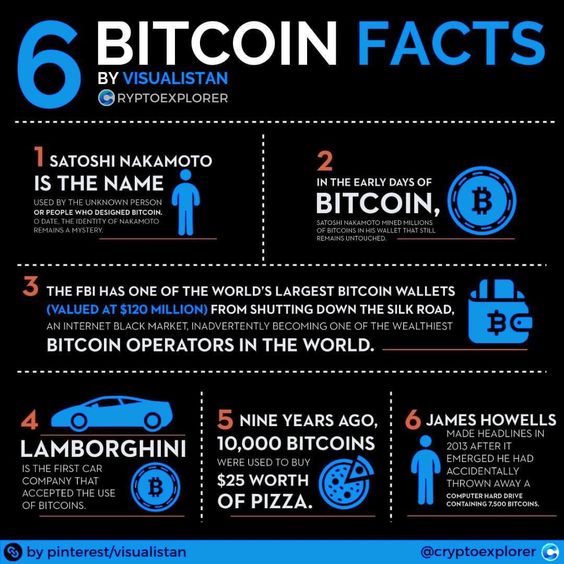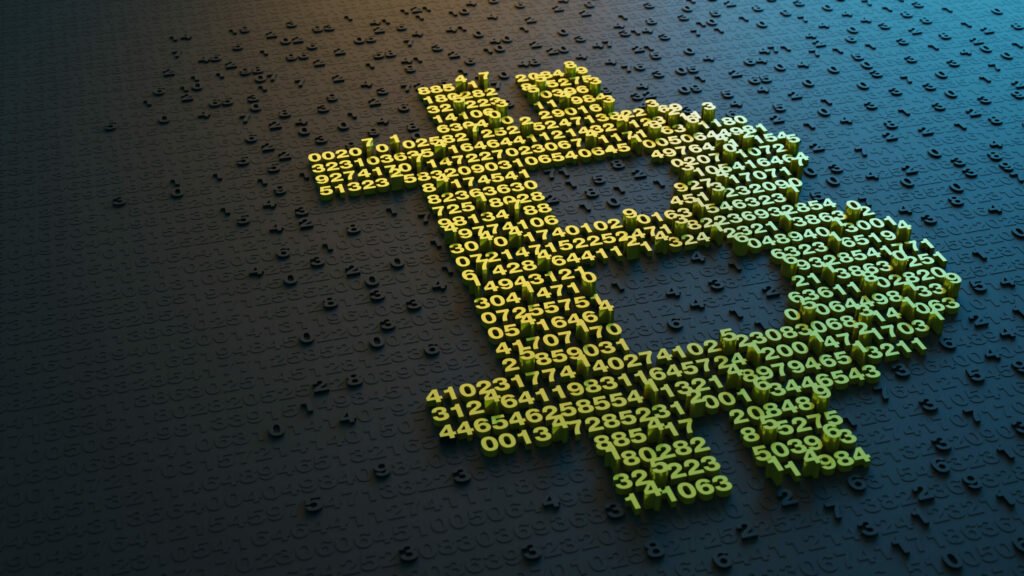If you’re new to cryptocurrency and have wondered “what is bitcoin?”, you’ve come to the right place. Here’s the skinny on the # 1 crypto on the market: Bitcoin.
Last time a friend owed you money for spotting him dinner, he might have laughed and said, “Oh, I’ll pay you back in Bitcoin!”
The joke is that he could pay you back in Bitcoin—but what does that even mean? What is Bitcoin?
Bitcoin hype is not only putting the fear of god into governments and regulators, it’s also a hot source of dank memes and pop culture quips. Its influence runs the gamut from taking space in the minds of hyper-serious economic philosophers to zoomers “memeing” their way through the internet.
If you asked any random person on the street, chances are they’ve heard of Bitcoin, but do they actually know what it is? Do you?
Luckily, you’ve come to the right place.
Talk Bitcoin to me
Before we get started, here are some Bitcoin-related terms and concepts you should know.
Bitcoin is a:
- Digital currency. It’s also referred to as a cryptocurrency because it uses cryptography to track and record transactions.
- Virtual currency — that means it doesn’t exist physically.
- Decentralized cryptocurrency — that means no government issues it.
- Peer-to-peer cryptocurrency — that means people can send it directly to each other without a bank or middleman.
- Revolutionary — but hopefully, you already knew that.
Also, anyone can use Bitcoin, not just people who are permitted by the monetary gatekeepers of society. It can be used for payments, yes, but it has other uses too. It can be a store of value; it can be a medium of exchange; it has many of the qualities of money. But it’s independent of centralized institutions.
When you own Bitcoin, you keep it in a digital wallet, which is a virtual vault, and you are solely responsible for it. What you do with it is under your control. You could spend it; you could invest it, you could hold it. You could even lose it, so be careful.
Where did Bitcoin come from?
You may wonder what’s revolutionary about Bitcoin when you can make electronic payments easily these days with dollars.
But think about the online payments you make regularly. Whether by credit card, PayPal, Apple Pay, or bank transfer, they all require you to trust the financial service that’s making the transaction for you.
You trust that they’ll take the correct amount of money from you and send it where it needs to go.
You trust that your dollars will still have value tomorrow.
You trust that the bank will give you your money when you ask for it.
That’s a lot of trust.
The creator of Bitcoin, Satoshi Nakamoto, aimed to make a digital currency that eliminated the need for all of that trust. He wanted a way for people to transact with each other directly, cutting out banks and merchants and even the governments that issue fiat. If it were possible to create such a currency, people could have complete control over their assets.
They could make secure online transactions without putting their money in someone else’s hands. An open-source digital currency could also reduce the amount of fees people must pay to intermediaries. Bitcoin became that currency.
In 2008, an enigmatic person or group calling themselves Satoshi Nakamoto released a white paper describing the idea for Bitcoin and how it would work. To this day, no one is certain exactly who Nakamoto is, but the white paper was shared in an online cryptography community. Nakamoto was hoping the new Bitcoin system would grow and become widely used as more and more people adopted it.
In the whitepaper he said, “What is needed is an electronic payment system based on cryptographic proof instead of trust, allowing any two willing parties to transact directly with each other without the need for a trusted third party.”
Nakamoto knew that the more people adopted Bitcoin, the more useful and valuable it would become. That was more than a decade ago. As of 2021, there were nearly 19 million Bitcoins in circulation, and the currency’s total market capitalization even hit $3 trillion in November of 2021.
Myths about Bitcoin
Whenever a revolutionary technology comes on the scene, it’s natural for skeptics to voice their concerns about digital currencies before they completely understand it.
You could even argue that’s one of the charms of any new innovation—or not. Early adopters of the printing press and the internet also had to explain why the new technology was valuable, but those new technologies changed the world, nevertheless.
Let’s take a look below at a few myths about Bitcoin. Click on each myth to see the explanation.
No one is going to use it.
It's fake.
Only criminals use it.
It will change the world.
Okay, but how does Bitcoin work?
Now that you know the main idea of Bitcoin—a decentralized digital currency that can be used between individuals without the need for a middleman—you might be wondering how it works.
What makes it decentralized? How is it different from other forms of digital exchange?
Click below to find out more about the main features of Bitcoin.
It’s a single-spend digital coin.
Bitcoin wasn’t the first digital currency, it was just the first one that solved several big problems. One of those was the double-spend problem. Previous digital currencies weren’t able to track whether someone spent the same coin twice without a trusted middleman. Of course, eliminating custodians was one of the main goals of digital currencies, so solving the double-spend problem was vital. By using something called hashing to timestamp transactions on a public ledger, Bitcoin is able to accept the first transaction a single coin is used for and reject any subsequent attempts to reuse the same coin, but without the need for a trusted third party to verify.
It's a peer-to-peer network.
Another important problem that Bitcoin solved was reversible transactions. The technology Bitcoin is built on is called a blockchain. This uses a decentralized, peer-to-peer network that records all transactions on the balance sheet, which is copied to all nodes. Because no single entity is maintaining the ledger and copies are distributed across the network, it’s extremely difficult to modify, so transactions become irreversible. As long as there are more honest nodes on the network than conspiring hacker nodes, the record cannot be modified, unlike a central bank’s ledger, which can be modified by the bank.
It’s a proof-of-work system.
Bitcoins are not released into circulation by a central entity. The system uses proof-of-work, which is a way to show that real-world resources were expended to reward miners with Bitcoins as they maintain the blockchain. Proof-of-work requires computers to use processing power to solve equations before data can be recorded. This places real-world value on the data so it can’t be changed frivolously. It also incentivizes people to keep the distributed network updated. Proof-of-work also disincentivizes attempts to steal because mining is more profitable than undermining the system.
It’s a limited supply currency.
One of the ways that central banks affect the economy is by controlling the money supply. Either increasing or decreasing the circulation of currency will inflate or deflate a currency’s value. The way Bitcoin solved the problem of inflation was by capping the supply at 21 million Bitcoins. Miners use computer processing power to solve equations that mine new Bitcoins. The interval at which they’re mined increases over time. Eventually, the last Bitcoins will be mined and the coin supply will be fixed.
What’s next for Bitcoin and other digital currencies?
It’s not even two decades old and 80% of governments in the world are already researching the possibility of creating central bank digital currencies.
Bitcoin blazed that trail. Plus, blockchain technology is not only useful for currency, new uses for smart contracts and decentralized databases are being developed every day. The world is ever-changing.

Bitcoin is a technological innovation that is already making a huge impact on the world. Its decentralized, self-sustaining network cannot be taken over by institutions with lots of power—much to the dismay of governments and financial gatekeepers who currently control the monetary policies of the world. An open-source currency like Bitcoin can give people control over their own finances like never before.
From sending money around the world without capital controls or exchange fees, to storing value outside of inflating fiat currencies, to investing in technological innovations that will continue to improve global quality of life, Bitcoin is more than just a meme or a cultural reference. It’s a powerful tool to move civilization forward.
There’s a lot more complexity that can be understood about Bitcoin, blockchain, and all the possibilities this new technology opens up. But you now have a basic understanding of what Bitcoin is and how it works. As adoption continues to grow around the world and people begin harnessing the power of Bitcoin, it can become as familiar as the internet.
If you’d like to know more about Bitcoin and how it works, one of the best ways to learn is to begin using it yourself!
About the Author

Emily Weber
Emily Weber is a content writer and decentralization enthusiast. She aims to read all the way to the end of the internet so you don’t have to. In her free time, you can find her making dank memes and tracking the pseuds on Twitter.
About Decentral Publishing
Decentral Publishing is dedicated to producing content through our blog, eBooks, and docu-series to help our readers deepen their knowledge of cryptocurrency and related topics. Do you have a fresh perspective or any other topics worth discussing? Keep the conversation going with us online at: Facebook, Twitter, Instagram, and LinkedIn.



